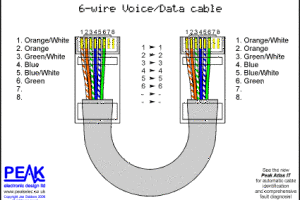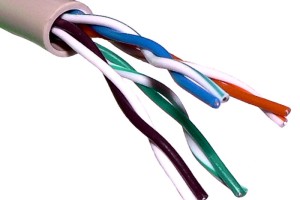Cat 5E Cable Information and Review
Cables of all lengths and sizes are what’s keeping countless electronic devices in shape and functioning properly. Cell phones, computers, tablets, gaming consoles. Cables are what essentially makes everything run. One of the most common and popular choices of cables is known as the Cat 5 cable.
Cat 5 Cables and What They’re Used For
The Cat 5 Cable, or what is also known as a category 5 cable, is a pair of cables that are twisted, which are capable of carrying signals. They are most commonly used as struture cables; these cat 5 cables are for Ethernet capabilities for computer networks. The Cat5 is a 5th generation of Ethernet technology and is a very common cable used today.
Characteristics
Connected by the use of punch-down blocks, the Cat 5 cables are mostly unshielded. This results in the cable relying on different signals and the twisted design of the cable for no is rejection.
Cat 5 cables are capable of carrying two telephone lines, and can also be used in multi-line phone connections.
The maximum cable length for a Cat5 is 100 m per TIA/EIA 568-5-A. That is for a cable segment. And when you consider the cord’s bending radius, you can expect the cable to bend at any radius that exceeds four times its outside diameter.
Life Span Expectancy
Although it’s manufacturer specific regarding a cable’s warranty, a typical Cat5e cable can last you anywhere from 15 to 20 years. However, that is excluding any pest or water damage you might encounter. So make sure the cable is always installed and maintained as instructed.
Cat5 and Cat5E Cables
When it comes to the Cat5E cable, it is known as the improved structure to that of a standard Category 5. The crosswalk and crosstalk specifications for a Cat5E cable are tightened, with some new specifications being introduced, as well. However, the bandwidth of both the Cat 5 and Cat5E cables remain unchanged. 100MHz is the standard performance for both cables. The cables are both suitable for fast Ethernet and Gigabit Ethernet.
Normally, Cat5 cables have four pairs of copper wire. Fast Ethernet will only make use of two of this pairs. However, the newly enhanced Cat5e cables, make use of all four pairs which makes it capable of supporting Gigabit Ethernet. Cat5e cables are also backwards compatible with its previous Cat5 model.
In a nutshell, Cat5E cables are much better at keeping signals on different circuits so that they’re not interfering with eachother. It can also handle speeds as high as 1000 mbps, a result of its 100 MHz performance.
Different Varieties
Cat5 cables will sometimes come in two varieties, known as Solid and Stranded. A solid Cat5 cable will support longer length, working best in office buildings which have fixed configurations for the I wiring. As for stranded Cat5 cables, they’re much more preferable for shorter distances and make great moveable wiring.
Environmental Precautions
It’s Important to remember that cables breathing in moisture can cause condensation to occur inside certain parts of your cable. And this isn’t just concerning Cat5E cables, but all of them. Even though there is outer PVC or LSOH insulation for Cat5E cables, the copper is unshielded. So keep these environmental precautions in mind.
Buying Cat5E Cables
Don’t ever try to rig your own Cat5E cable. There are several retailers more than happy to help you find a Cat5e cable suitable for your needs. It’s important to keep length in mind when buying one of these cables, as you want to make sure it’s correct for whichever device you may be using. You should also make sure that it meets standards to that of the American National Standards Institute regarding durability and efficiency. Buying a faulty cable can result in severe damage to what you might be using it for. Make sure these cables are used appropriately for the right device.
Residential Uses
Even though Cat5 cables were more practical for business information rather than residential use. For the past 9 years, consumers have been increasingly demanding home-friendly networking technologies, as an attempt to connect an entire household to a single family network for both internet use and information sharing.
Benefits from Cat5E Cables
File sharing and the ability to share networking drives can be accessed from several different computers. Backing up files and sharing large amounts of data will be much smoother with fluid connection.
Modern gaming consoles now have Ethernet capabilities, which allows interaction with users all over the world, as well as downloading updates and new features for your console.
Small businesses and home offices can make great use of Cat5E cables, allowing users access to a fast environment for home networking. Medical billing, invoice dispatch, and tech support specialists, jobs that depend on a stable and fast connection can get just that with Cat5E cables.
Having a Cat5E cable-based network in a residential environment is incredible useful. From LAN gaming to operating a small, in-home business, it’s a great way to ensure a connection that’s reliable.
Cat5 and Cat6 Cables
There are two cables which are most commonly used for computer structures which is, of course, the Cat5E and the Cat6 cable. A Cat6 cable is, what you might call, an upgraded version of the Cat5, providing better transmission performance.
Cables that reside in the Cat6 family are definitely newer Ethernet technologies. But Cat5 and Cat5e cables will always be a popular choice among consumers, as they’re compatible with LANs, affordable, and can support high speeds.




